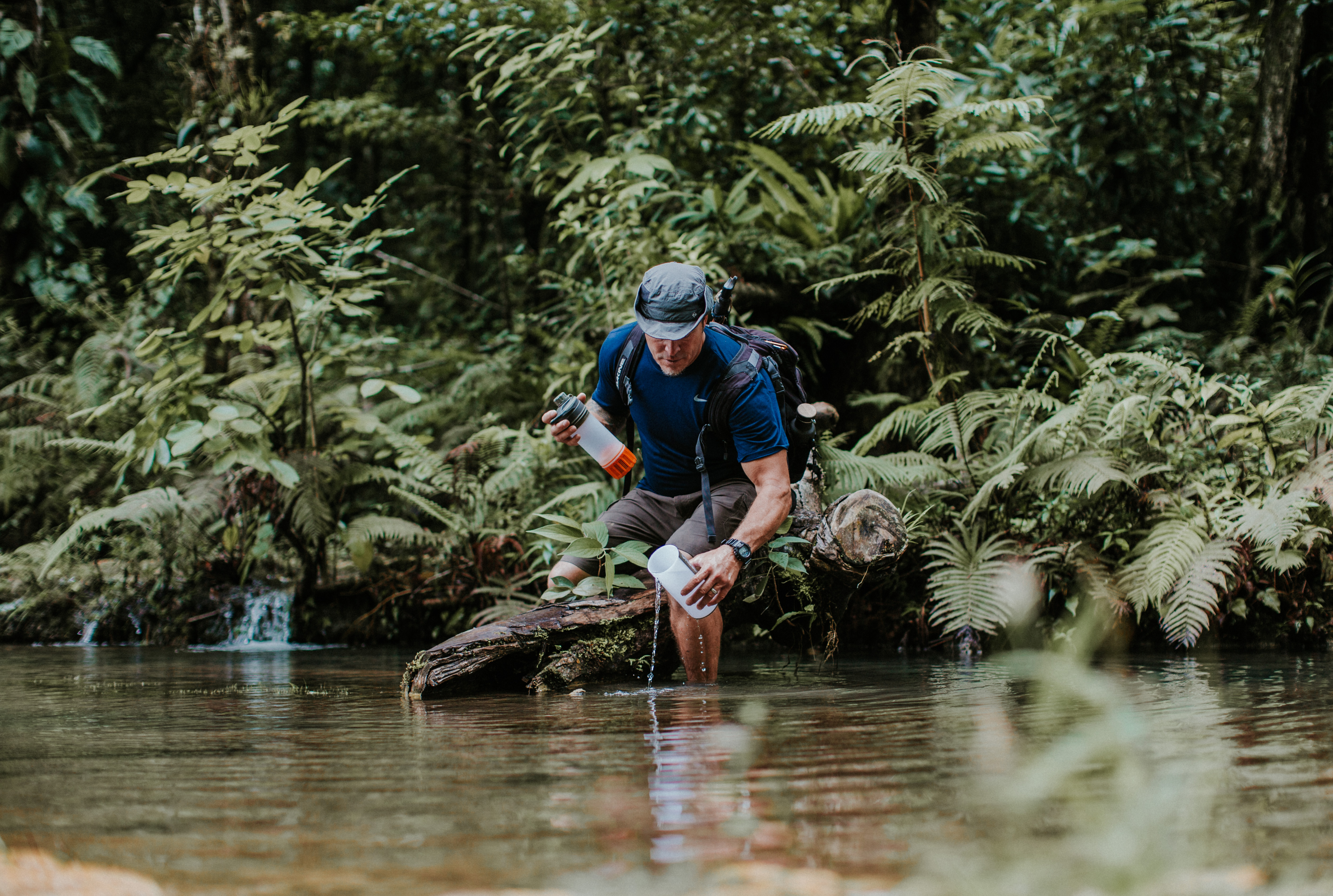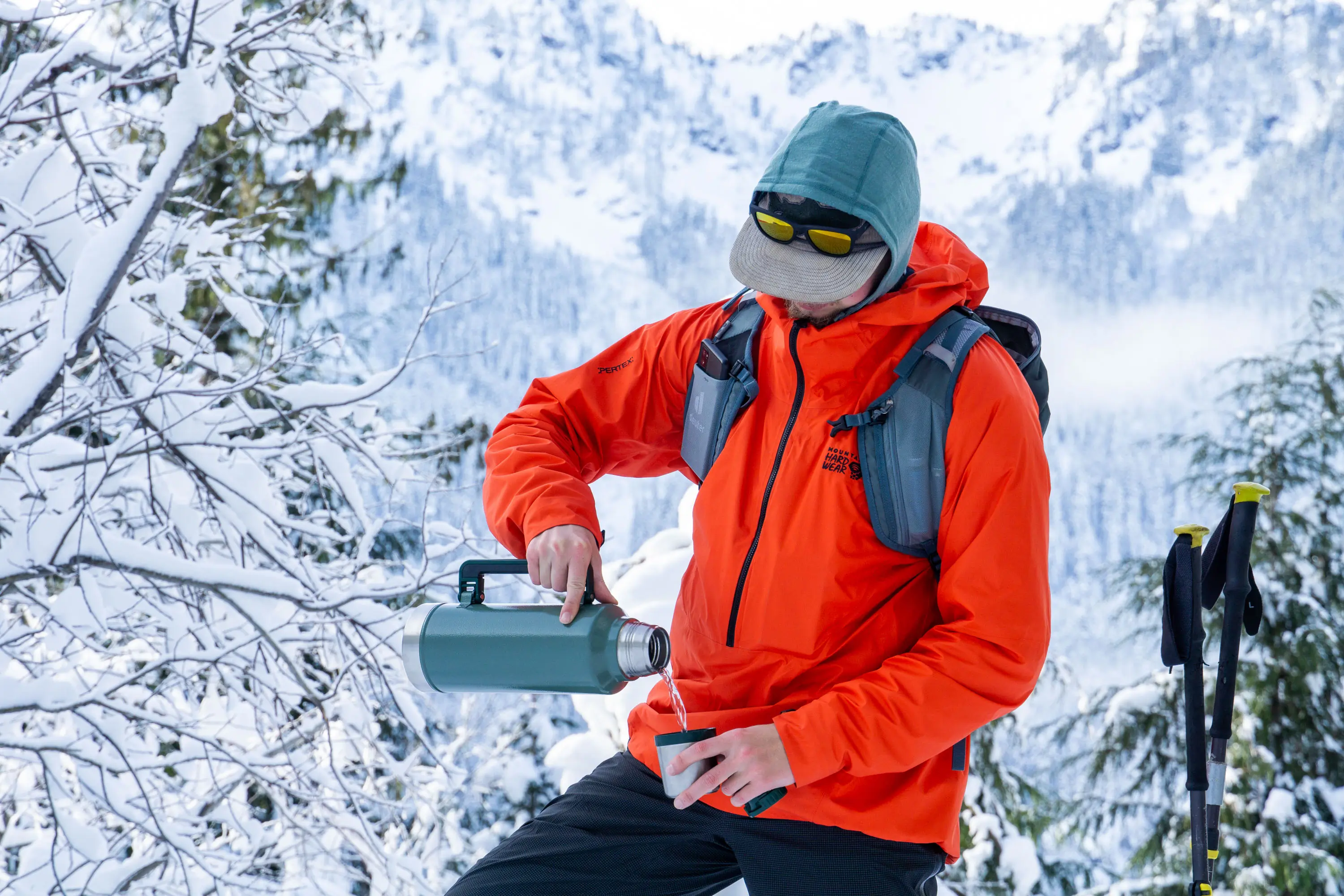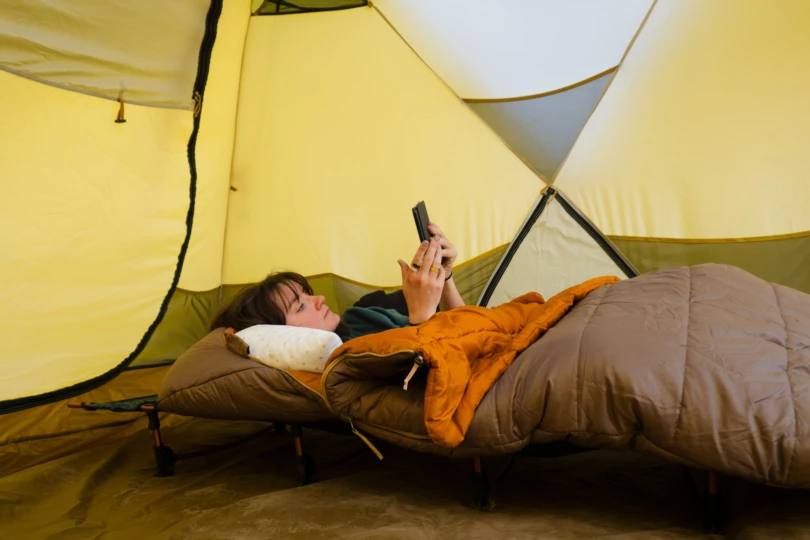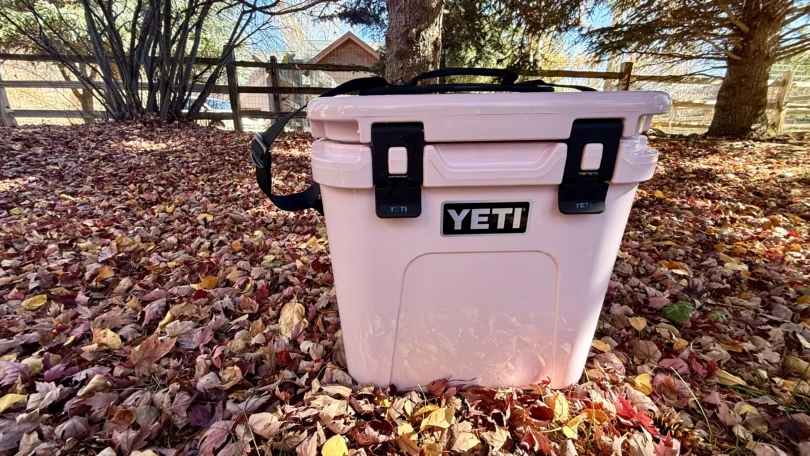GRAYL just announced the third iteration of its innovative GEOPRESS water bottle, claiming a filtration rate of 5 liters per minute. It produces purified water in seconds. Long before the public release, we pitted it against some of the foulest water on the planet.
When the first-generation GRAYL Filtration Cup hit the market several years ago, many critics including myself felt it missed the mark. It was sound in concept but overly complicated and heavy. I assumed the brand’s inaugural product would also be its swan song. But the brand listened to user feedback, and the improvements that followed resulted in the second-generation Ultralight bottle.
I’m now one of the 100,000 GRAYL loyalists traveling the globe and backwoods with an Ultralight always at my side. My bottle has filtered murky water in India and Nepal as well as suspicious puddles in Peru. I cringe to think how many dangerous pathogens it has never allowed to hit my lips. But as good as the Ultralight bottle is, it too is not without a few drawbacks.
And now that bottle is about to get better.
Third Time’s the Charm
Launched on Kickstarter in 2018, the GEOPRESS is the GRAYL bottle I have long awaited. My preproduction sample arrived just in time to test it in gooey marshes on the edge of Chile’s Atacama Desert.
The most noteworthy update is the increased capacity from 16 ounces to a more useful 24. The design retains the brand’s proven technology and coffee-press-inspired format. Simply fill the main cylinder with untreated water, insert the filtration sleeve, push down, and in roughly 10 seconds the water within meets the EPA’s strict standards for purification.
There are quite a few filter bottles on the market, but not many remove viruses, heavy metals, fine particulates, and pollutants. Microplastics and industrial chemicals like benzene and fluoride are increasingly common in water sources, even those labeled as potable.
As a frequent traveler to undeveloped corners of the world, my constant worries include substances like arsenic, rotavirus, and hepatitis A. The multistage filter at the bottom of the inner sleeve removes those threats while improving taste, smell, and clarity. I find I stay optimally hydrated and more healthy when I travel with my GEOPRESS.
Better and Bigger
When the GRAYL design team set out to reboot its bottle, it didn’t just make it bigger — it made it better. The best part of the new design is the two-way lid. When removed, the rounded lip of the bottle helps me chug big gulps without dribbling down my chin. The smaller drink-through cap provides a controlled pour and includes a keeper strap. A large-diameter loop makes for an easy two-finger carry, and, unlike the Ultralight, the GEOPRESS fits a standard carabiner.
My favorite feature is the pair of rubberized press-pads on the lid. Pushing the inner sleeve down with enough pressure to force water through the filter requires modest effort. While it’s not uncomfortable with the Ultralight, it’s much easier with the GEOPRESS. Because filtering water often involves wet hands, rubber placed at the base, outer sleeve, and around the upper edge helps maintain a firm grip.
The Fight Against Plastics and Pathogens
For most people, water quality is an afterthought. For backcountry travelers and globe trotters, the search for safe water is a daily pursuit. As a backpacking tool, the dip-and-drink ease of the GEOPRESS makes it a convenient solution.
But this filter does have a downside: Despite the 5-liter-per-minute flow rate, it is a little awkward when used to process large volumes of water. The cartridge also only produces 250 liters of water. Replacement filters are affordable at $25, but if you’re traveling for a long time, plan ahead for the short lifespan.
As a travel tool, the GEOPRESS is tough to beat. Whether treating water in a hotel sink in New Delhi or from a stream in the Andes, it’s the best way I have found to stay hydrated and healthy. Most travelers resort to purchasing single-use bottles while on the road. Environmental experts suggest we use far more than the previously estimated 1-million-per-minute plastic bottles now in production — bottles that inevitably languish in our landfills, ditches, and oceans for the coming 400 years. The GEOPRESS eliminates the need to use those plastics.
At $90, the GEOPRESS is an expensive bottle. But it’s a solid value compared to other purifiers.
https://www.kickstarter.com/projects/thegrayl/grayl-geopresstm-water-purifier-purify-water-anywh#
GEOPRESS Water Filter Specs
- Meets or exceeds the standards demanded by the United States Environmental Protection Agency’s National Drinking Water Standards
- Removes: 99.99% of viruses (e.g., rotavirus, norovirus, hepatitis A), 99.9999% of bacteria (e.g., E. coli, Salmonella, dysentery), and 99.9% of protozoan cysts (e.g., Giardia, Cryptosporidium, amoebae)
- Filters: Particulates (e.g., microplastics, sediment, silt), many chemicals (e.g., chlorine, benzene, chloroform), and heavy metals (e.g. lead, arsenic, chromium)
- Active technology: Electroabsorption (ion exchange, ultra-powered activated carbon, and silver-treated zeolites)
- Height: 10.4″ (26.5 cm)
- Diameter (at base): 3.4″ (8.6 cm)
- Diameter (longest edge of cap): 5.6″ (14.2 cm)
- Weight: 15.9 oz. (450 g)
- Capacity: 24 oz. (710 mL)
- Fast flow rate: 8 seconds per 24 oz. (5 L/minute)
- Purifier cartridge lifespan: 350 presses (65 gal/ 250 L)
- Warranty: GEOPRESS is accompanied by a 10-year warranty covering workmanship and materials.
Christophe Noel is a freelance journalist, photographer, and general vagabond. A seeker of stories untold, he can often be found with a map in hand, lost, in the most remote corners of the globe. The founder of Clean Drink Adventures, he believes in the power of the traveler and doing good as you go.







